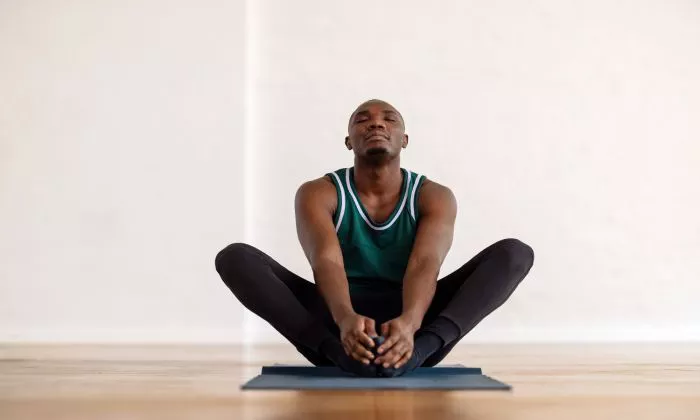Improving flexibility is essential for maintaining overall physical health and well-being. Flexibility refers to the range of motion in your joints and muscles, which plays a crucial role in everyday activities, sports performance, and injury prevention. Whether you’re a beginner looking to increase flexibility or an athlete aiming to enhance performance, incorporating targeted stretches and exercises into your routine can help you achieve greater suppleness and mobility. In this comprehensive guide, we’ll explore effective strategies and techniques for improving the flexibility of your body:
Understanding Flexibility:
Before diving into specific techniques, it’s important to understand the different types of flexibility:
Static Flexibility: This refers to the ability to stretch a muscle to its full extent and hold it in a stretched position for an extended period. Static stretching is commonly used to increase overall flexibility and range of motion.
Dynamic Flexibility: Dynamic flexibility involves moving your joints and muscles through their full range of motion in a controlled manner. Dynamic stretches are often used as part of a warm-up routine to prepare the body for physical activity.
Active Flexibility: Active flexibility refers to the ability to move a joint through its full range of motion using only the muscles surrounding that joint, without assistance from external forces.
Passive Flexibility: Passive flexibility involves using external forces, such as gravity or a partner, to stretch a muscle beyond its natural range of motion. Passive stretching techniques are commonly used in yoga, Pilates, and assisted stretching routines.
Effective Strategies for Improving Flexibility:
Incorporate Regular Stretching Sessions:
Dedicate time each day to perform a variety of stretching exercises targeting different muscle groups.
Focus on both static and dynamic stretches to improve flexibility and mobility.
Hold each static stretch for 15-30 seconds, gradually increasing the duration as your flexibility improves.
Practice Yoga or Pilates:
Yoga and Pilates are highly effective for improving flexibility, strength, and balance.
Participate in yoga or Pilates classes led by certified instructors to learn proper techniques and alignment cues.
Choose classes that focus on flexibility and mobility, such as Hatha yoga, Yin yoga, or Pilates mat classes.
Include Foam Rolling and Self-Myofascial Release:
Foam rolling and self-myofascial release techniques help release tension and improve flexibility by targeting tight muscles and fascia.
Use a foam roller or massage ball to roll out areas of tightness and discomfort, focusing on major muscle groups such as the calves, hamstrings, quadriceps, and upper back.
Warm-Up Before Stretching:
Always warm up your body before performing static or dynamic stretches to increase blood flow and prepare your muscles for stretching.
Incorporate 5-10 minutes of light cardio, such as jogging, cycling, or jumping jacks, followed by dynamic movements like arm circles, leg swings, and hip circles.
Focus on Proper Technique:
Pay attention to proper alignment and form during stretching exercises to maximize effectiveness and minimize the risk of injury.
Avoid bouncing or jerking movements, as these can strain muscles and connective tissues.
Maintain a steady, controlled breath throughout each stretch, exhaling as you deepen into the stretch.
Gradually Increase Intensity and Duration:
Progressively increase the intensity and duration of your stretching sessions as your flexibility improves.
Experiment with different stretching techniques, such as PNF (proprioceptive neuromuscular facilitation) stretching or active isolated stretching, to challenge your muscles and further enhance flexibility.
Stay Consistent and Patient:
Improving flexibility takes time and consistency, so be patient and persistent in your efforts.
Aim to stretch regularly, ideally incorporating flexibility exercises into your daily routine.
Celebrate small victories along the way, such as reaching a new range of motion or experiencing reduced muscle tightness and discomfort.
Sample Flexibility Routine:
Here’s a sample flexibility routine that incorporates a variety of stretching techniques:
Dynamic Warm-Up (5-10 minutes):
Arm circles
Leg swings (front to back and side to side)
Hip circles
Torso twists
Neck rolls
Static Stretches (Hold each stretch for 15-30 seconds, repeat 2-3 times):
Forward fold (hamstrings and lower back)
Standing quadriceps stretch
Seated straddle stretch (inner thighs and groin)
Child’s pose (lats and lower back)
Cobra pose (chest and abdominals)
Seated forward fold (hamstrings and calves)
Foam Rolling/Self-Myofascial Release (5-10 minutes):
Foam roll calves, hamstrings, quadriceps, IT band, upper back, and shoulders
Use massage ball or tennis ball to target specific areas of tightness
Cool Down and Relaxation (5 minutes):
Lie on your back with knees bent, feet hip-width apart (supine twist)
Savasana (corpse pose) for relaxation and integration of the practice
Conclusion:
Improving flexibility is a gradual process that requires patience, consistency, and dedication. By incorporating a variety of stretching techniques into your routine and focusing on proper form and alignment, you can enhance your flexibility, reduce muscle tension, and prevent injuries. Whether you choose to practice yoga, Pilates, or a combination of stretching exercises, prioritizing flexibility will benefit your overall health and well-being, allowing you to move more freely and comfortably in your daily life. Remember to listen to your body, honor its limitations, and approach your flexibility journey with compassion and curiosity.
Related Topics:
How Long Does It Take to Lose Weight with Yoga?
Period-Friendly Yoga
Walking VS Yoga: Which Is Better?


